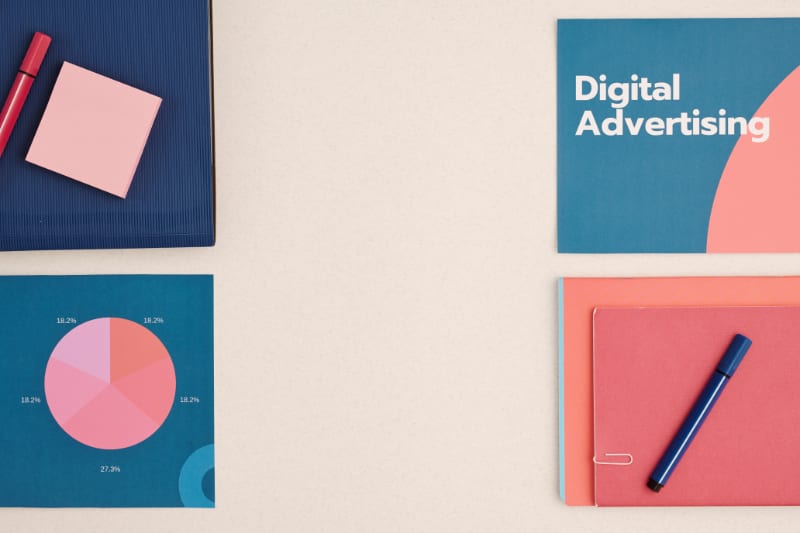Advertisement technology (ad tech) can look intimidating, especially with all the acronyms, but using a supply-side platform (SSP) can help your website reach maximum potential. SSP advertising can help sell ad space on your site, earning you extra money for free space you already have. In this article we will discuss everything you need to know about supply side platforms (SSPS), similarities and differences between SSPS and DSPS, and everything else you need to know about digital advertising.
What is SSP?
- 1 What is SSP?
- 2 What is the Difference Between DSP and SSP?
- 3
- 4 SSP Benefits
- 5 How Can I Advertise with SSP?
- 6 Maximize the Supply Side Platform SSP Today
- 7 Frequently Asked Questions About Supply-Side Platforms (SSP)
- 7.1 1. How much money can I make using an SSP on my website?
- 7.2 2. What are the minimum requirements to start using an SSP?
- 7.3 3. How does SSP differ from traditional banner advertising or Google AdSense?
- 7.4 4. Will using an SSP affect my website’s loading speed or user experience?
- 7.5 5. Can I control what types of ads appear on my website through SSP?
- 7.6 6. How do price floors work and how should I set them?
- 7.7 7. How long does it take to see results and get paid from SSP advertising?
A supply-side platform by definition is ad tech that allows web publishers to run ads on their page and receive income. It is a software that connects web publishers to sell their ad inventory (blank space on websites) to advertisers. The program uses an algorithm to determine what ads to display.
Ad technology can be complex, so let’s break it down.
SSP (also known as a sell-side platform) is a form of programmatic advertising. Programmatic advertising allows the computer software to make digital purchases for you, instead of having to negotiate terms for advertising. Before programmatic advertising was created, web publishers would have to seek out advertisements that fit their brand’s audience and negotiate a deal to put ads on specific places throughout your site. With the number of web publishers, advertisers, and audiences continually growing, this wouldn’t be a viable way to advertise today. SSP allows a complex process to become a simple way for you to make money.
Supply-Side Platform (SSP) and Real-Time Bidding (RTB)
SSP works with real-time bidding (RTB), which is an automated auction that happens to determine which ads will appear on the web page someone is searching for. The crazy thing about RTB is it takes place in a matter of milliseconds to negotiate and select ads that best fit the consumer. This process takes place while the web page loads. Real-time bidding allows web publishers to optimize the amount of ads that can be shown on their ad inventory. RTB is sold on impressions, which means every time an ad appears on your site, it is counted. The viewer doesn’t even need to click on the ad for you to make money. If the ad is on your site, advertisers are paying for it. That equals more money for your site by the number of ads that can be shown.
Soft and Hard Price Floors
A hard floor is a floor price that the publisher or SSP sets as the minimum price to win a bid. The soft floor is the lowest net price that a bid is reduced to by the seller.
What is SSP Summed Up?
Supply-side platform (SSP) sounds like a more confusing concept than it really is. Here is what you need to know:
- It is advertising done digitally and automatically so you don’t have to put in work
- It fills your ad inventory by connecting to advertisers that viewers will engage with
- Gives you more control over the prices of ad slots
What is the Difference Between DSP and SSP?
There isn’t much of a difference between demand side platforms DSP and SSP, except who the technology software serves. Both are types of online advertising. They are similar in what their job is but work on opposite sides of the deals. One works for the advertiser (DSP) and the other the web publisher (SSP).
DSP (Demand-Side Platform)
You might be wondering about using DSPS to sell ad inventory. Demand-side platforms DSPS is a tool that advertisers use to buy multiple ads through one interface. It can get ads at a cheaper and faster rate. DSP is a system that benefits the advertisers (the buyer). RTB helps advertisers not waste time on impressions that won’t interest the viewer. Instead of throwing their ad on a site, RTB takes into consideration the audience viewing the page. This platform uses information gathered on the viewer to help select the best advertisement to show. It allows for advertisers’ budgets to be maximized by showing the ad to the right people.
SSP (Supply-Side Platform)
SSP advertising benefits the publisher (the seller). It automatically makes a sale for the web publisher. It allows you more control over the ads that appear on their site.
You can:
- Filter ads based on certain criteria or even advertisers
- Set “price floors” that allow you to not have to settle to “fill the space” with an ad by having to lower your standards for what you want to be paid
How Do DSP and SSP Work Together?
They work together to auction the available space based on the information they have about the consumer. Then, the technology automatically buys the best option that fits the viewers information. It also benefits the seller by selling the available space for the highest bid within relevance. The system comes to a settlement on the price of the ad and it is then shown to the consumer. It becomes a win-win. The buyer reaches the audience they are aiming to target. The seller gets revenue without having to negotiate terms or place the ad directly on the web page themselves.
SSP Benefits
You might still be questioning if programmatic advertising is the right move for your website. Here are five benefits of SSP.
1. Fill Your Ad Slots
Need more advertising inventory? One of the number one things SSP advertising will do for your website is to increase your site’s fill rate. A fill rate is a measurement that tells if an ad spot is typically vacant or filled. This helps gain more money when the site’s ad inventory is filled because more impressions are being bought.
2. Opens Up Your Market of Potential Buyers
When you go from an ad agency with a few brands to having a market open of potential buyers, ads get filled faster. This goes back to the number one thing SSP can do for you, fill your ad slots. It also allows you to expand your advertising pool and set the criteria that you want your ads to have. You no longer have to pool from companies you know or local ads. SSP will automatically select the ad that is best for your viewer.
3. Set “Price Floors”
Another nice perk of SSP is the ability to set “price floors”. A “price floor” allows you to set a minimum amount to be paid for each ad space. Any buyers that want to go below that amount will automatically be filtered out to optimize your revenue. This is important because you know your company is getting what they are worth in every advertisement going on your website.
SSP advertising selects the highest bidder above the limit you value your ad slots at. To maximize your ad slots you can change “price floors” based on which page the advertisement will appear. The pages with more traffic can have a higher limit, than one that doesn’t see as much traffic. This gives flexibility in your prices that can secure ad inventory to be full.
4. Selects Best Ad, Not Highest
Having ads that are relevant to what your viewers are interested in, increases the likability of your site. If consumers are constantly seeing an ad over and over, the impressions on the ad will drop. This is because people like to see a change in their ads. SSP selects the best ad suited for each viewer with the highest bid. The software won’t select an irrelevant ad because it happens to be the highest bid. It takes the information given and applies it to give your viewer for the best advertisement experience on your site.
5. Limits Ad Impressions
As mentioned above, SSP selects the best ad, but there’s a limit on how often a viewer can see the same or similar advertisement. By capping the ad frequency it helps the viewer to stay satisfied. It also makes sure the publishers’ ads do not become annoying. Sometimes the publisher can even ask if the viewer found relevance in the ad to allow the SSP software to learn more. After the feedback is given, the system can target audiences in a way that gives them the best advertisement experience.
How Can I Advertise with SSP?
SSP advertising is made easy for the publisher. If you have a website with consistent traffic and quality content, SSP advertising could bring you steady revenue.
To Start SSP Advertising
- You should select an SSP service that fits what you desire for your website.
- This company will manage and run things on your behalf. It takes the stress out of having to manage your ads.
- Continue the regular content that makes your website and watch your income increase.
- The SSP managing company will increase the number of buyers, ad revenue, and overall user experience with advertisements on your site.
Maximize the Supply Side Platform SSP Today
If you have a website that you want to sell ad space on, you should consider using SSP. Your company will benefit from using this ad technology, guaranteed. It allows your site to maximize profits without having to do any work. The future of advertising is here. It is using a supply-side platform to help manage ads that are best suited for viewers on your site.
This form of advertising is only growing. Getting started is easy with the right people guiding you. For help with programmatic advertising, contact SEO Design Chicago today!
Frequently Asked Questions About Supply-Side Platforms (SSP)
1. How much money can I make using an SSP on my website?
Revenue from SSP advertising varies significantly based on your website traffic, audience demographics, content quality, and niche. Websites typically earn anywhere from $0.50 to $10+ per 1,000 page views (CPM), with higher-value niches like finance or technology commanding premium rates. Factors affecting earnings include your site’s traffic volume, visitor engagement, geographic location of your audience, and the price floors you set. Most publishers see steady monthly income ranging from hundreds to thousands of dollars, depending on their site’s performance and optimization.
2. What are the minimum requirements to start using an SSP?
Most SSP providers require your website to have consistent monthly traffic (typically 10,000+ page views), quality original content, and compliance with their content policies. Your site should have a professional appearance, clear navigation, and provide genuine value to visitors. You’ll need to meet technical requirements like having proper website structure, fast loading times, and mobile responsiveness. Some SSPs may have additional requirements such as specific geographic traffic distributions or content categories they accept.
Unlike traditional banner advertising where you negotiate directly with advertisers, SSP uses automated real-time bidding to sell your ad space to the highest qualified bidder in milliseconds. While Google AdSense is a single ad network, SSP connects you to multiple demand sources and ad exchanges simultaneously, potentially increasing competition and revenue. SSP also gives you more control over pricing through price floors and better targeting capabilities. The automated nature means less manual work compared to traditional advertising relationships.
4. Will using an SSP affect my website’s loading speed or user experience?
When properly implemented, SSP should have minimal impact on your website’s performance. Modern SSPs use asynchronous loading techniques that prevent ads from slowing down your content. However, the quality of implementation matters – working with reputable SSP providers and properly configuring ad placements is crucial. You can control ad frequency capping to prevent overwhelming users with too many ads. Most SSPs also include viewability optimization to ensure ads only load when they’re likely to be seen, improving both user experience and advertiser value.
5. Can I control what types of ads appear on my website through SSP?
Yes, SSPs provide extensive control over ad content and advertisers. You can filter ads based on categories (blocking adult content, gambling, etc.), specific advertisers or domains, and ad formats. Most platforms allow you to set up brand safety filters, review and approve advertisers, and create blacklists for unwanted content. You can also set different criteria for different pages or sections of your website. This ensures that only ads aligned with your brand values and audience preferences appear on your site.
6. How do price floors work and how should I set them?
Price floors are minimum bid amounts you’ll accept for your ad inventory. Set them too high and you might not fill all ad slots; set them too low and you’re leaving money on the table. Start by analyzing your current ad performance and gradually testing different floor prices. You can set different floors for different pages based on their traffic value – homepage and high-traffic pages can command higher floors. Most successful publishers start conservatively and adjust based on fill rates and revenue data. Dynamic price floors that adjust based on real-time market conditions are also available through some SSPs.
7. How long does it take to see results and get paid from SSP advertising?
You should start seeing ads appear on your site within 24-48 hours of SSP integration, though it may take 1-2 weeks for the system to fully optimize based on your audience data. Revenue reporting is typically available within 24 hours, but payment schedules vary by SSP provider. Most pay monthly with a 30-60 day delay (similar to Google AdSense), while some offer faster payment terms. Initial revenue might be lower as the system learns your audience, but should stabilize and potentially grow within the first month as optimization improves ad targeting and pricing.








Contact Us today!